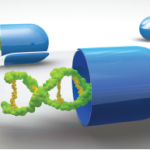ACR Convergence 2021—The field of pediatric rheumatology has benefited from significant developments in the basic and translational sciences over the past year, and it can be challenging to keep up with the latest discoveries. In the Basic Science section of the Pediatric Rheumatology Year in Review at ACR Convergence, Tiphanie Vogel, MD, PhD, assistant professor of pediatric and adult rheumatology, Texas Children’s Hospital and Baylor College of Medicine, Houston, highlighted several key studies that have significant implications for advancing our knowledge of pediatric rheumatic diseases.
Molecular Patterns
Dr. Vogel began by presenting her personal favorite publication of the year, which was a collaborative effort between industry and several academic centers in Europe. Barturen et al. introduced their study by acknowledging that systemic autoimmune diseases are clinically heterogeneous.1 Further, even if patients appear similar to one another clinically, they often respond differently to treatment.
Using high dimensional analysis of genome, transcriptome and methylome data, the investigators discovered that subjects clustered into four distinct molecular patterns: inflammatory, lymphoid, interferon and undefined. The undefined, or non-pathologic, cluster included healthy controls and those with low disease activity. Each cluster included all diagnoses, although certain clusters were enriched by specific diseases.
With longitudinal data, researchers were able to demonstrate that when some subjects went into remission, they were able to move from their pathologic cluster into the undefined cluster. During a disease flare, the same subjects would return to their initial pathologic cluster, suggesting these molecular patterns are inherent to the patient, regardless of their autoimmune disease diagnosis. “If you’re like me and you’re really interested in the idea of targeted therapy based on molecular patterns, then this is a really powerful paper,” Dr. Vogel said.
SLE Studies
Next, she drew attention to several studies in patients with systemic lupus erythematosus (SLE), including several neutrophil-related papers, but she chose to highlight a study on the role of erythroid lineage cells in lupus. Caielli et al. described how a subset of patients with active SLE inappropriately retain mitochondria in their red blood cells due to a missing metabolic signal.2 Opsonization of mitochondria-positive red blood cells is highly inflammatory and correlates with enhanced interferon signatures and increased disease activity.
The investigators also found mitochondrial retention did not occur in healthy controls or in patients with juvenile dermatomyositis, but it did occur in patients with chronic atypical neutrophilic dermatosis with lipodystrophy, an autoinflammatory disease characterized by high interferon signatures. Dr. Vogel explained that this provides evidence for potential subgrouping of SLE patients and may allow for new therapeutic targets in the future.



